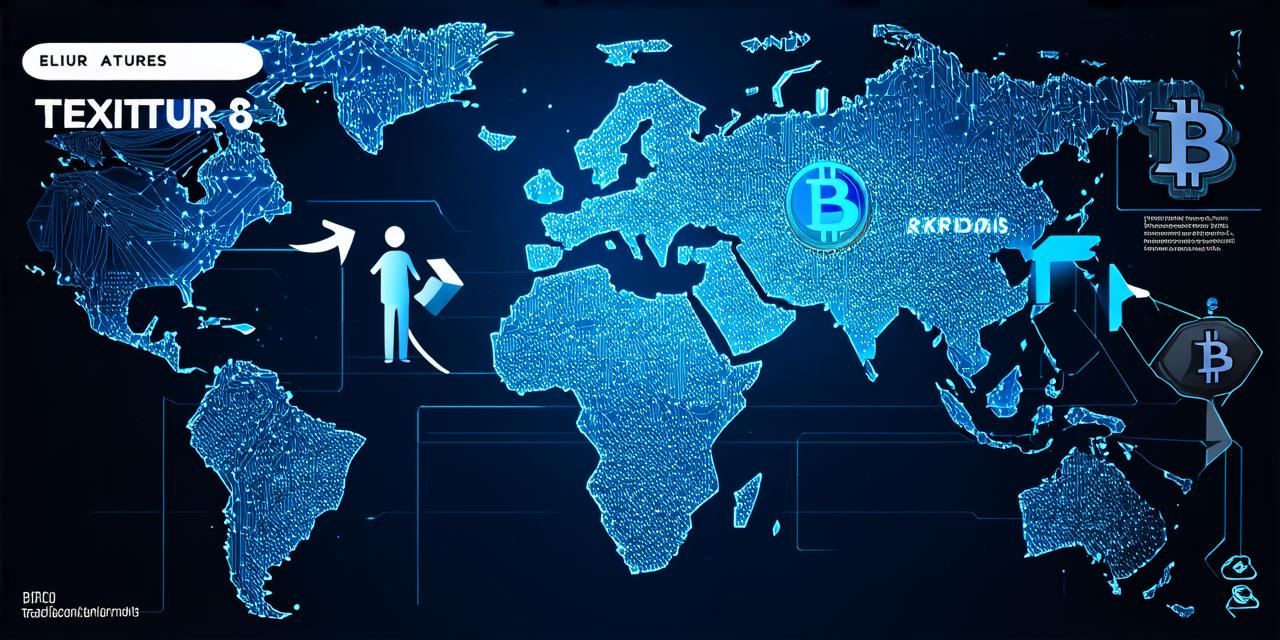What is a TXID?
A TXID is a unique identifier that is assigned to each transaction on a blockchain. It is a 32-character alphanumeric string that is generated by the node that validates and broadcasts the transaction. The TXID serves as a way to track the status of a transaction, as well as to verify its authenticity and integrity.
TXIDs are used to identify transactions on various types of blockchains, including Bitcoin, Ethereum, and other cryptocurrencies. They are typically stored in a blockchain explorer or wallet, where they can be viewed by anyone who has access to the network.
How Do TXIDs Work?
When a user initiates a transaction on a blockchain, it is broadcasted to the network for validation and verification. The node that receives the transaction first generates a unique TXID and adds it to its local copy of the blockchain. This TXID is then included in the confirmation message that is sent back to the user’s wallet, indicating that the transaction has been processed successfully.
As more nodes on the network validate the transaction, they add their own copies of the block to the chain, and the TXID becomes a permanent part of the blockchain record. This makes it possible to track the status of a transaction at any point in time, as well as to verify its authenticity and integrity.
Where to Find TXIDs on Blockchains
The location of TXIDs on a blockchain can vary depending on the specific network and wallet being used. However, there are several ways to find TXIDs for most blockchains.
1. Blockchain Explorers
One of the easiest ways to find TXIDs is by using a blockchain explorer, which is a website or app that allows users to view and search the blockchain for specific transactions. Popular blockchain explorers include blockchair.com, blocktivity.info, and ethplorer.io. These explorers typically allow users to search for transactions by address or TXID, as well as to view detailed information about each transaction, including its date, time, amount, and status.
2. Wallets
Many cryptocurrency wallets, such as MyEtherWallet and MetaMask, also include a blockchain explorer feature that allows users to search for transactions by address or TXID. In addition, some wallets, like BitPay and Coinbase, allow users to view their own transaction history, which includes the TXIDs of all transactions they have made using the wallet.
3. Public Ledgers
Some blockchains, such as Bitcoin and Ethereum, maintain public ledgers that record all transactions on the network. These ledgers are available for anyone to access and search, and can be used to find TXIDs for individual transactions. However, this method can be more complex than using a blockchain explorer or wallet, as the ledger data can be difficult to parse and analyze without specialized tools.
4. APIs
For developers who need to programmatically access transaction data on a blockchain, there are several APIs (Application Programming Interfaces) available that provide this information. These APIs can be used to extract transaction data, including TXIDs, from the blockchain and integrate it into custom applications or services.
FAQs
1. Can I change my TXID?
No, once a TXID has been generated for a transaction on a blockchain, it cannot be changed. This is because the TXID is a permanent part of the blockchain record and serves as a unique identifier for the transaction.
2. How long does it take for a TXID to be confirmed on a blockchain?
The time it takes for a TXID to be confirmed on a blockchain can vary depending on the network’s confirmation time and transaction volume. For example, Bitcoin transactions typically take around 10 minutes to be confirmed, while Ethereum transactions can take anywhere from a few seconds to several minutes.
3. Can I search for transactions by date or time on a blockchain?
Most blockchain explorers and wallets allow users to search for transactions by address or TXID, but they do not typically provide the option to search by date or time. However, some public ledgers, such as the Bitcoin blockchain, maintain a timestamp for each transaction, which can be used to approximate the date or time of the transaction.
4. Can I view all transactions on a blockchain using an API?
Yes, there are several APIs available that provide access to transaction data on various blockchains, including Bitcoin and Ethereum. These APIs allow developers to programmatically extract transaction data, including TXIDs, from the blockchain and integrate it into custom applications or services.

